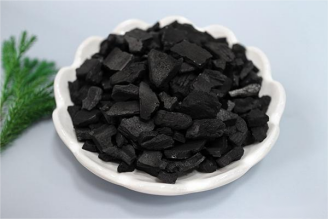
RELATED
 Sodium Hydrosulfide (NaSH)2024-06-03
Sodium Hydrosulfide (NaSH)2024-06-03 Wishing you peace and wellness on the Dragon Boat Festival.2025-05-30
Wishing you peace and wellness on the Dragon Boat Festival.2025-05-30 Introduction of food additive zinc sulfate2025-05-21
Introduction of food additive zinc sulfate2025-05-21 Soda flake, granular soda ash, solid soda ash are all called sodium hydroxide, what is the difference?2025-05-12
Soda flake, granular soda ash, solid soda ash are all called sodium hydroxide, what is the difference?2025-05-12 Differences in carbonization of coconut shell charcoal materials in different regions2025-04-22
Differences in carbonization of coconut shell charcoal materials in different regions2025-04-22
MESSAGE
The flotation process is based on the different surface wettability of the materials. In principle, flotation works very similarly to a sedimentation process, where the density properties of the materials relative to the density properties of the medium in which they are placed lie at the base of the separation. Sometimes a centrifugal field is applied to enhance the separation. Flotation works in a different way because in the liquid medium (usually water), "carriers" are introduced, i.e. air bubbles, which are responsible for floating hydrophobic particles that adhere to the bubbles relative to the sinking hydrophilic particles.

The behavior of the ore during flotation depends not only on the natural floatability (hydrophobicity) of the ore, but also on the floatability obtained using flotation reagents. The general classification of flotation reagents is shown below
Flotation collectors
1. Xanthate - PAX, PBX,, SIPX, SIBX, etc.
2. Air flotation - dithiophosphate 25s, diisobutyl/dibutyl sodium dithiophosphate, dibutyl ammonium dithiophosphate, etc.
3. Isopropyl ethyl thiocarbamate/isopropyl ethyl thiocarbamate (Z200/IPETC), isobutyl ethyl thiocarbamate foamer
4. Methyl isobutyl methanol
5. New foaming agent
6. Pine oil (polymer flocculant)
7. Polyacrylamide (activator)
8.Lead nitrate
9. Copper sulfate (inhibitor)
10.Sodium thioglycolate
11.Sodium metabisulfite/metabisulfite
12.Sodium sulfite
13.Sodium cyanide
14.Zinc Sulfate
15.Sodium Sulfide
16.Sodium hydrosulfide (acid-base regulator)
17.Alkali caustic soda
18.Soda ash water treatment
19.Activated carbon
20.Calcium hypochlorite
21.Iron sulfate
22.Thiourea
Please give us a message





